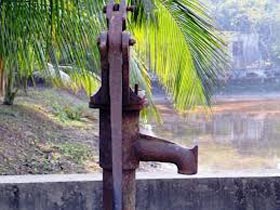In Bangladesh, up to 65 percent of tubewell water is contaminated by fecal pathogens although the level of contamination is low, according to a recent study of icddr,b.
The study revealed that possible mechanisms for tubewell contamination with fecal pathogens are infiltration into the groundwater aquifers from nearby latrines, septic tanks and ponds, short-circuiting of contaminated surface water into the wells through leaky seals of various tubewell components and harboring of bacteria in contaminated hand pumps.
The Water, Sanitation and Hygiene Research Group of icddr,b’s Centre for Communicable Diseases conducted the study with support from the United States Agency for International Development (USAID).
The research group carried out a randomly controlled trial to evaluate the individual and combined impacts of chlorinating and safely storing tubewell water on household water quality and diarrhoea prevalence among children in rural Bangladesh.
The study showed that tubewell water becomes contaminated during collection, handling and storage in households. The most commonly used storage container in Bangladesh is the`kolshi’, a lidless earthen vessel with a wide brim, which leaves water vulnerable to contamination by contact with hands.
There is evidence from various settings on contamination of drinking water during household storage, and the extent of point-of-use contamination is typically more pronounced in settings where the source water quality is relatively good, such as in the case of tubewell water in Bangladesh.
The researchers screened 87 randomly selected villages in the Fulbaria upazila of Mymensingh to identify households that consistently relied on shallow tubewells (with depth of less than 250 ft) as their primary source of drinking water, did not complain of iron taste in water from their tubewells, and had a child between the ages of six and 18 months among the household.
They selected a random subset of 1,800 households from those that met their eligibility criteria.
Source: UNBConnect










